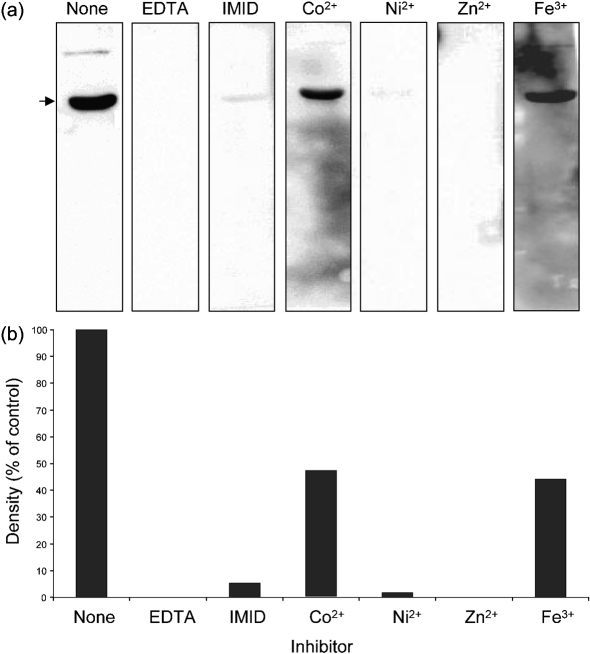Fig. 4.
Ni-HRP binding by rLimB is inhibited by EDTA, imidazole and divalent metal cations. (a) FW blots were done in parallel and prepared from the same SDS-PAGE gel (12.5 % acrylamide; w/v) using whole-cell lysates of C. burnetii (mixed-cell population; 20 μg protein per lane). Blots were incubated in the presence of EDTA, imidazole (IMID) or divalent metal cations, as described in Methods. The resulting FW blots demonstrate a marked reduction in rLimB binding of Ni-HRP in the presence of Co2+ or Fe3+ (<50 % of control), as shown by the reduced chemiluminescent signal (arrow). Binding signal was not detectable on blots incubated with EDTA or Zn2+ and was only slightly detectable (<5 % of control) if imidazole (IMID) or Ni2+ were present. (b) Densitometric analysis of the blots in (a), shown as a percentage of the signal density of the untreated control (None). The assay is representative of two independent sets of experiments.

